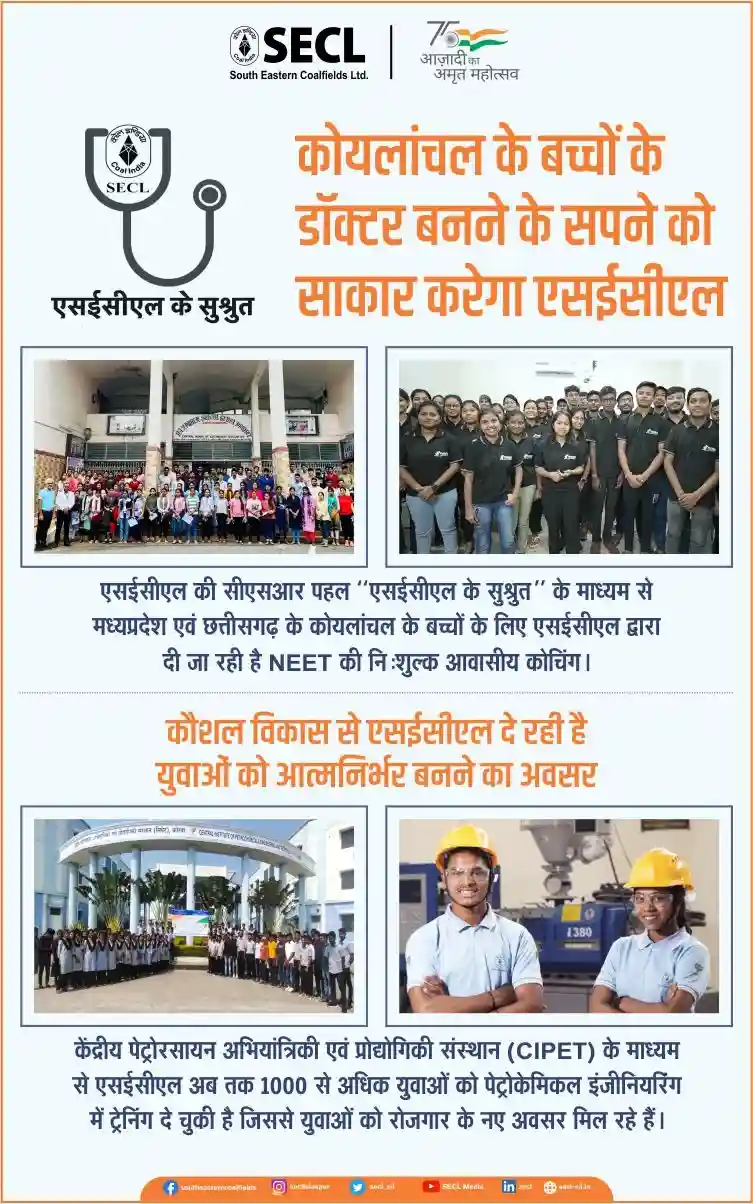Immediately after its discovery, Mineral oil emerged as the engine of industrialisation. The same Petroleum and Steel are the very basis of economies, globally.
Now, on the one hand the global demand for steel, aluminium, and food grains such as wheat and rice is on the rise, while the supply lines for the same are suffocating due to geopolitical conditions.
India is well-positioned to benefit from it and has emerged as a viable option for numerous mineral products. India’s exports will likely benefit from the prevalent situations.
India produces more steel and aluminium than Russia, has abundant wheat stocks, and is the top rice exporter in the world.
For example, the Steel mills in India are stepping in to fill a supply gap, as consumers from Europe to Africa are turning to India- the world’s second-largest producer. India’s Steel mills expect a boost in their exports to up to 40% from current 25%.
Several Indian Steel companies- JSPL, Tata Steel, JSW Steel, SAIL and ArcelorMittal Nippon Steel India are reported to have a handful of export orders. Despite India having excess capacity (142 MT of steel manufacturing capacity versus 118 MT of production in 2021), Indian steelmakers are pursuing aggressive capacity expansion.
They intend to enhance the capacity by 70-100% in this decade as the government’s National Steel Policy estimates a domestic requirement of 300 million tonnes per annum (MTPA) by 2030.
The Ministry of Steel has also placed the “globally competitive domestic steel industry” as a critical pillar in India’s ascent to a $5 trillion economy.
The availability of iron ore is also in tune with the designs to go aggressive in the international market.
In 2021, India exported 20.63 million tonnes Steel mainly to Italy, Belgium, South-East Asian countries like Indonesia, Malaysia and Thailand, Australia, West Asia, Nepal and Vietnam. But now they are prepared to supply a bigger quantity.
This trend might seem triggered by the recent geopolitical conditions, but in fact it is a longer trend. Exports of finished steel have been on the rise since August 2019.
India exported 10.78 million tonnes of finished steel in 2020-21, against 8.3 million tonnes in 2019-20. Between April and June, India exported 3.5 million tonnes and imported 1.1 million tonnes of finished steel, as India’s exports of finished steel products overtook imports .
In the last fiscal year, total production stood at 96.2 million tonnes, while consumption was at 94.89 million tonnes. India exported 10.78 million tonnes, while it imported 4.75 million tonnes of finished steel in FY21. Exports were up by 13% in April-August despite the high base of FY21.
Furthermore, India’s net steel exports (finished steel and semis) are expected to rise at 8 million tonnes in FY22 compared to 6 million tonnes last fiscal year.
Similarly, India is eyeing to give a boost to export of mineral oils, backed by India’s massive refining capacity. The world’s biggest refining complex is the Jamnagar (Gujarat) facility of Reliance Industries Ltd.
This facility can process 1.36 million barrels of crude a day from its two refineries. In fact, there is one export-focused plant, with a capacity of 704,000 barrels a day.
As the fuel rises steeply in Europe the export prospects have brightened further. Prices in Europe have risen to as high as $139 a ton from a usual of less than $100.
Follow on Facebook (https://www.facebook.com/industrialpunch) and Twitter (https://twitter.com/IndustrialPunch) for updates on social media…















